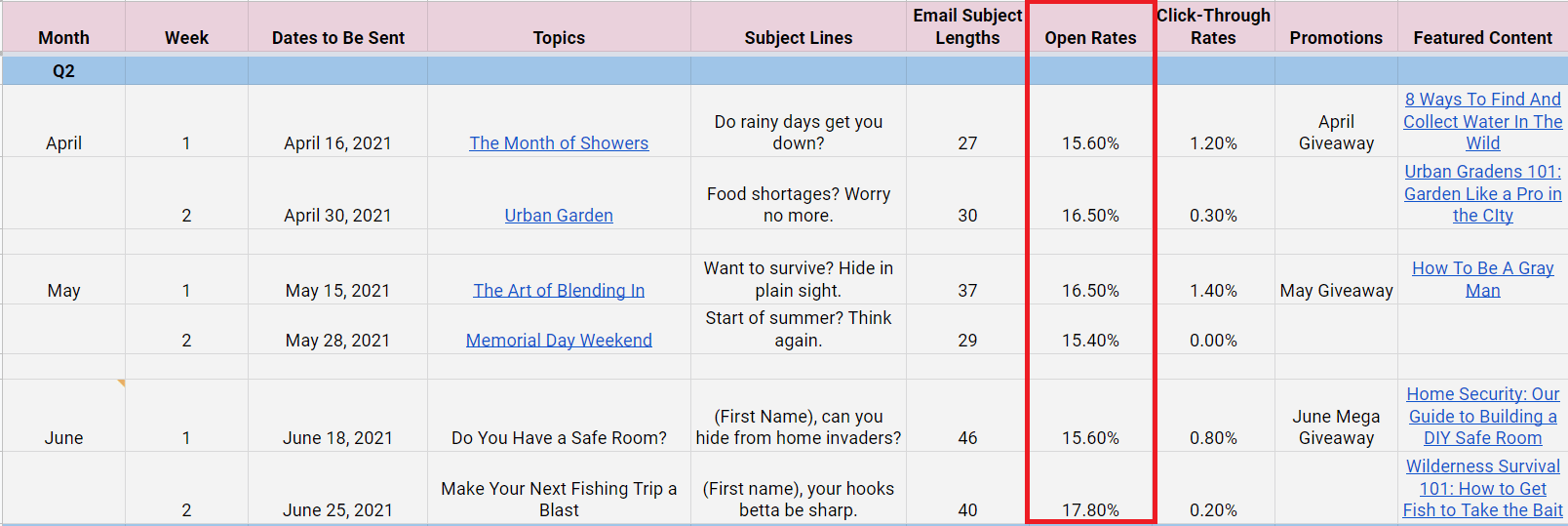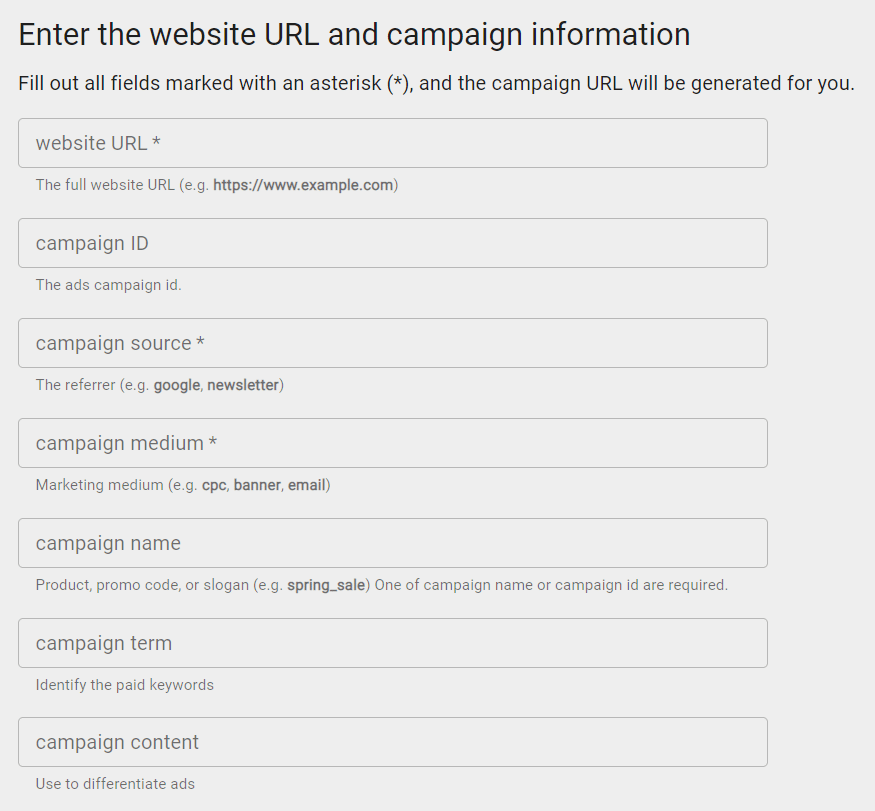Newsletter Overhaul for Your Ecommerce Brand [2023 Guide]

This article contains affiliate links that will allow us to earn commissions without any extra cost to you. Read our full disclosure here.
An email newsletter is essential to a successful ecommerce brand, but it’s far trickier than just landing on people’s inboxes and getting clicks.
In this article, we'll show you the tricks that helped us improve our own ecommerce newsletter and boost our conversions.
Contents
Why Your Ecommerce Brand Needs a Newsletter
A newsletter is a proven and tested tool that you can use to share relevant information about your brand and products to your target audience. Forbes says that newsletters can help companies connect with consumers more effectively and at a much lower cost than other methods of outreach, i.e. paid advertising on social media.
Having an off-Amazon audience that you control and nurture can give you a leg up on the competition, especially when relying solely on Amazon has fallen out of favor among third-party sellers. An audience that you can nurture through a regular newsletter is more likely to take action throughout their customer journey.
Sending External Traffic to Amazon
Simply relying on Amazon to generate traffic to your listings is no longer sufficient as the marketplace becomes more competitive.
EcomCrew’s Sending External Traffic to Amazon course will teach you how to master organic and off-Amazon traffic sources so you can boost conversions without throwing money at paid advertising.
In this course, you’ll learn how to start and grow an authority blog within your niche, how to track your traffic, and how to work with influencers, among other things.
Another benefit of running a newsletter is that it establishes your authority and position in the industry, especially if you’re selling in a highly competitive niche like us.
Speaking of selling, a newsletter is also a great way to get your products out there and boost your conversion rate, especially as paid advertising is getting more and more expensive as ecommerce marketplaces grow more and more complex. We’ve conducted a study on this and found out how much PPC has really increased in cost and why it’s one of the biggest threats to your Amazon business.
The ROI on an email newsletter that you send out regularly is far greater than the conversions gained through paid ads, which usually only get you returns for a limited period of time. Running a newsletter that tells customers how your products solve their problems is an easy win for any online business.
Another easy win when running a newsletter is it can serve as a tool for SEO optimization, particularly when you’re trying to promote a specific piece of content or aiming to increase your visibility for certain keywords or topics.
Last year, we overhauled the newsletter for our prepping brand and got very significant results. After applying the techniques we’ll be discussing below, our Tactical Newsletter went from an average Open Rate of only 15.92% to 24.55%—as of Q4 2021, we averaged a solid Open Rate of 23.06%, with no email falling below the 20% threshold.


Check out the strategies that we used to overhaul our newsletter and boost out open rates down below:
Hook Your Readers with a Killer Subject Line
The subject line is the most important part of any email. In fact, it’s usually the only thing most people look at when deciding whether to click through or go about their day.
To illustrate how important the subject line is, consider these two examples:
[Name], Your Hooks Betta Be Sharp.
Giving in to beer pressure?
The first one has an open rate of only 17.8%, while the second has a whopping 35.8%.
Why? Apart from the punny mention of alcohol, the second subject line is way wittier than the first and creates a mystery to the reader—what is beer pressure?
Also take note of the capitalization. A lot of popular newsletters avoid using title case capitalization, as it makes the email sound a lot more formal, whereas the second one feels friendlier to audiences.

Write a Concise But Informative Body
According to Brafton, the core components of a great newsletter are design, content and value. A lot of the principles we discussed in our article on writing killer content for your ecommerce website apply to writing newsletters, too.
Your newsletter should have informative paragraphs that are easy to read. Make your point or introduce your products in no more than two paragraphs. When applicable, make use of bullet points and simple language to make your email an easy read. An informative but concise body will beat a lengthy information salad every time. Of course, that is not to say that your newsletter cannot have some depth—the trick is to be creative in aiming for simplicity and relevance at the same time.
As for the language, you’ll want to write in a relatable and conversational tone. Personalize your email—address your readers in their first name and use simple, personalized language. As much as possible, talk like your audience. Use the words and terms they often use.
You can also personalize the email sender, as studies have shown that people respond better when the email ends with a sign off from a particular person in the company, instead of just the company name.
Always remind customers how your product solves their problems so as to motivate them to take further steps, such as clicking through to a more detailed product page or checking out a full blog article.
Add a Compelling CTA
Always include a compelling and clickable CTA that serves as a portal for readers to learn more about the products you just introduced. Catchy and witty one liners work best.
You should also aim to create urgency. Some newsletters use a countdown timer when sending out promotions to motivate readers to take action immediately, or else they miss out on the deal. This technique has been observed to boost conversion rates by as much as 8-14%.
Use an Eye-catching Design
Oftentimes, how your newsletter appears to the reader matters more than the actual text. Make sure you use a design that’s both easy on the eyes, yet screams what your brand is all about.
In our recent newsletter overhaul, we found out that using simple graphics, as opposed to more complex ones, work better in terms of clicks and conversions. This is because fancy graphics tend to be more distracting to look at and are more prone to errors in rendering, which could make your newsletter look bad when opened. Having a responsive newsletter will always be better than one with complex graphics but take forever to load up.

Send Your Emails at an Optimal Time
The time of day when you send out your newsletter is crucial, yet often overlooked. Research reflects that people tend to open emails when they are about to begin or conclude their day. Our Tactical and EcomCrew Newsletters have had great success when sent around 6 AM in the morning.
In our overhaul, sending the newsletter early in the morning during the first couple of days of the week works best. You’ll want to schedule your email blasts when customers are more likely to have energy and interest to open and read the interesting content that you are putting out.
You also don’t want your email to be buried in all the other emails your readers are subscribed to. So the best time to send your newsletter is just before the majority of your subscribers check their inboxes.
Also, as we mentioned in a previous section, adding a time constraint usually boosts clicks and conversions, especially when you are sending out deals and promos that last for a limited time only.
Keep Track of Your Metrics
The good old adage, “what gets measured gets managed”, is relevant in email marketing. Make sure you track your open rates, clickthrough rates (CTR), and conversion rates. This allows you to identify patterns on how your readers engage with your emails.
Here’s a quick rundown of the metrics you want to look at:
- Click-through rate (CTR). This is the percentage of your readers who click from your email newsletter to your website, and oftentimes can reflect the conversions coming from your email campaigns.
- Open rate. This is the percentage of emails actually opened out of all the recipients, and is a good indicator of how well your subject lines are written.
- Bounce rate. This is the percentage of emails that don’t land on your readers’ inboxes, and is usually high if your email contains spam triggers.
Use UTM parameters in your newsletter. This helps you track the number of visitors coming into your website through your emails, and it gives a clear picture of how effective your email campaigns are. Consequently, it gives you an idea of which changes to make to improve your metrics.
How to Generate UTM Trackers
If you’re unfamiliar with UTM trackers, a quick way to generate codes for your campaigns is to use Google’s Campaign URL Builder. It will generate UTM tags based on the information you provide. You can then add your UTM tracker to the links you plug into your emails and start measuring your success in Google Analytics.

Using our weekly Roundup as an example, links with a UTM tracker will look like this:
www.ecomcrew.com/amazon-global-logistics/?utm_source=kajabi&utm_medium=email&utm_campaign=roundup
A/B Test Your Changes and Segment Your List
Speaking of changes, A/B testing your experiments is just as effective in email marketing as it is for tweaking your A+ content or your lightning deals. Most of the available email marketing tools can help you run A/B tests automatically and provide granular results. This technique helps you understand to which elements of your emails your customers respond most.
Segment Your List
Another easy win you can do is to segment your customer list and make your email campaigns more relevant to your respective segments. You can divvy up your email list according to a lot of various categories, such as purchasing behavior.
One effective way we found is to separate users who constantly open our emails from the ones that have not responded (or purchased) in a while. This allows us to upsell more effectively to our loyal customer base on one hand, and craft targeted emails to more casual customers on another.
For the EcomCrew newsletter, segmenting the active members in our list (those who opened an EcomCrew email in the last 90 days) from our overall list worked wonders. Before we implemented the change, we were getting an open rate of around 12-17%. At present, our monthly average open rate is at 40.1%.
Spy on the Competition
Know what your competitors are doing. If their newsletters are getting more buzz than yours, chances are they’re doing something right and you should know what that is. Being aware of trends and best practices in the industry is part and parcel of an effective email marketing strategy.
Make it a habit to check out not only your competitors’ email blasts, but also those of leading ecommerce companies. Reading the most popular newsletters will give you an idea of how to craft your own emails and which practices work best.
Final Thoughts
A great email newsletter can do wonders for your ecommerce business. It’s a proven way to connect with consumers and promote your brand without breaking the bank on paid advertising. These tips should help you overhaul your email campaigns and start getting those juicy conversions.
Did we miss any newsletter strategy? Let us know in the comments down below.






